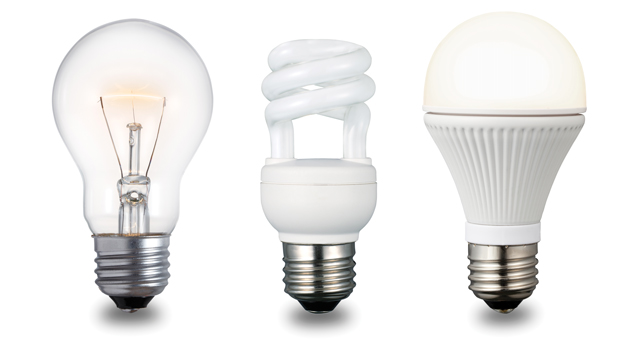There are easy, cost-effective things we can do to help the environment. Switching off lights when we leave a room, using smart-strips for our appliances and electronics, and washing clothes in cold water instead of hot are three simple ways to conserve energy. But do you realize the significance of changing out incandescent light bulbs in your home? Not only will this save you money on your monthly utility bill, but it would also decrease the amount of greenhouse gases in the environment. Changing just one bulb in each home in America would be equivalent to taking over 500,000 cars off of the road. Really.
Traditional incandescent bulbs have been phased out of production and are no longer manufactured as of this year. The store shelves are stocked with more energy-efficient bulbs.
Not sure of the difference between CFL and LED? Not sure how much energy you could be saving if you make the switch? To make the best decision for you and your home, start by knowing some label basics. Consumers used to just look for wattage of the bulb: the lower the watt, the less energy it used. Now we look at lumens: the higher the lumen, the brighter the bulb. Look for the Energy Star logo to ensure it meets the requirements of quality, efficiency, and lifetime. The Energy Star bulbs can use up to 90 percent less energy and last up to 25 percent longer than traditional bulbs. This can mean significant savings over the lifetime of the bulb. These bulbs are cooler, producing about 70 percent less heat to reduce monthly energy costs.
With the different options, choosing the right bulb for your fixtures takes some research, so here’s a breakdown of three
of the most common types of energy-efficient bulbs:
1. Halogen Incandescent These bulbs offer the least value, but are similar in appearance to traditional incandescent bulbs. They are only about 28 percent more efficient than the old bulbs, but they do reach their brightness instantly. They are a good choice for indoor or outdoor use.
2. CFL (compact fluorescent lamp) The CFL option is about 75 percent more efficient and lasts about ten times longer than the old incandescent bulb. This bulb has the same amount of lumens, but a lower wattage than traditional bulbs. These are not recommended for use outdoors since they tend not to work in colder temperatures. There is a trace of mercury in CFL bulbs, so you will want to use care when disposing of this bulb.
3. LED (light emitting diode) The LED bulb is equal to CFL in energy savings, but this bulb tends to be a little pricier. However, with its projected lifespan up to twenty-five times longer, you will need to purchase these bulbs less often. A LED bulb uses less energy and tends to not be as bright as its counterpart. These are a good option for indoor and outdoor use and they are also free of mercury, so ordinary disposal will suffice.
Taking baby steps in conserving energy will have a huge impact on the environment. There is no need to jump to large, expensive options when your energy bill is high – especially when reducing energy costs at home truly could be as simple as changing a light bulb. Now you have the information you need to make the best choice for you, your home, and the environment.





